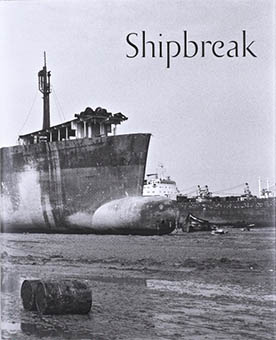Claudio CAMBON


This post is also available in:
 French
French
américain, au Bangladesh à la fin des années 90. A travers mots et images, le livre décrit le rôle que joue le navire pour plusieurs groupes de gens à travers le monde : des ouvriers américains qui l’ont fabriqué dans les années soixante, et les marins qui travaillaient dessus pendant quasiment quarante ans, jusqu’aux bangladais qui démontaient le vaisseau, principalement à la main, ainsi que les nombreuses personnes qui ont incorporé les matières premières du bateau dans leurs vie, prenant part aux efforts de leur pays pour développer son infrastructure et son économie.
Le livre décrit comment le navire a été un gagne-pain pour toutes ces personnes, qu’elles aient été impliquées dans sa création, exploitation, ou destruction, tissant un lien invraisemblable entre elles afin de révéler une humanité commune qui transcende les barrières d’espace et de temps qui semblent les séparer.
Shipbreak illustre également comment leurs vies donnent à cet objet magnifique une vie propre à lui, et, ainsi, le livre devient une méditation sur la nature de la vie elle-même, de sa perte et sa transcendance. Des photographies des plans d’origine du navire et de sa mise à l’eau, jusqu’à celles montrant des objets issus du métal refondu, il témoigne de la façon dont le bateau est née, a vécu et mourut, avant de revivre sous diverses formes qui ressemblent peu à l’original.
Claudio Cambon
SHIPBREAK Shipbreak tells the story of the last voyage, dismantling, and recycling of an American merchant vessel in Bangladesh in the late 1990s. Through both words and images, it describes how the ship becomes a touchstone for many groups of people across the world: from the American shipbuilders who built her in the early 1960s and the seamen who worked on her for almost four decades all the way to the Bangladeshi shipbreakers who took the vessel apart, more or less by hand, and the many people who incorporated the ship’s raw materials into their daily lives as part of their country’s effort to develop its infrastructure and economy.
The book describes how the ship was a source of livelihood for all these individuals, whether they were engaged in the act of its creation, operation, or apparent destruction, and it draws a seemingly improbable connection between them in order to reveal a common humanity above and beyond the boundaries of space and time that appear to separate them.
Shipbreak also depicts how their lives collectively give this magnificent object a metaphoric life of
its own, and as such, the book becomes a meditation on the nature of life itself, on its loss and its
transcendence. From photographs of the ship’s blueprints and launch to ones of objects made with the recast metal, it bears witness to the way the ship was born, lived and died, and ultimately came to live again, albeit in a myriad of new forms that bear little resemblance to its former self.
Claudio Cambon


